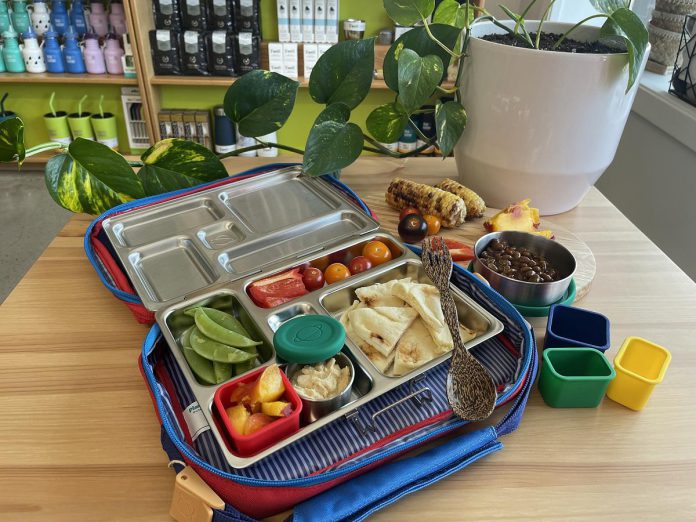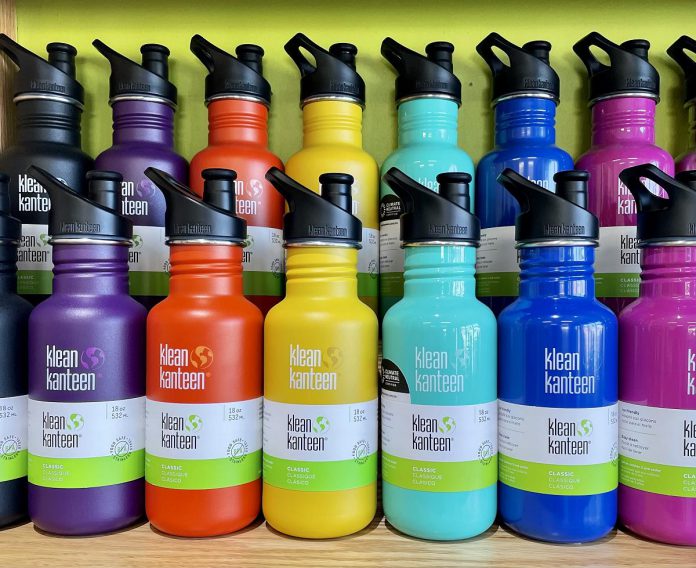
Whether you are headed to the beach or prepping for the back-to-school hustle, packed lunches are an opportunity to make thoughtful choices about the waste we may be creating and sending to landfill.
Here are my top 10 tips to help make packed lunches less wasteful and more enjoyable.
1. Choose low-waste options when shopping
Reducing waste inside the home requires us to choose low-waste options outside of the home. When we are grocery shopping, instead of reaching for a package of cheese strings, consider buying a brick of cheese and cutting it creatively.
Rather than buying pre-packaged produce, opt for the unpackaged options and bring your own produce bags.
Choosing lunch snacks that have limited or no packaging is a great way to reduce waste.
2. Involve your child in the lunch planning and packing process
Children feel empowered and learn a lot when they are given the chance to make their own choices in the kitchen.
Depending on their age, you can split the workload while encouraging your child’s independence.
When children have a voice and can choose their own lunch options, they are more likely to eat the meals they make.

3. Swap out sugary juice boxes with a single stainless-steel water bottle
A single stainless-steel water bottle can be filled (and refilled) with water straight from the tap.
Though juice boxes are recyclable, they are often not rinsed properly or finished before being put into the bin. This leads to contamination of other recyclables and can result in the whole lot being sent to a landfill.
Getting into the habit of drinking water at lunch and throughout the day is good for your child’s health and your wallet too.
4. Look for reusable stainless-steel containers, thermoses, and water bottles
Stainless steel is durable, lightweight, BPA-free and recyclable at the end of its useful life.
If you don’t already have them in your own cupboards, see if you can find used ones at your local thrift shop or eco-store.
If you must buy new, consider choosing an ethical company such as Klean Kanteen, which is a B-Corp certified organization committed to environmental sustainability.
5. Practice your lunch routine before school
Practice your lunch routine before school by packing a demo lunch and going on a picnic. This gives you the opportunity to see your child’s lunch gear in action.
Check to see how easily your young ones can open and close the containers by themselves. This way you can be sure the food you pack is accessible to them when they head to school on their own.
Testing lunch containers is an impactful way to make low-waste lunches fun before kids even arrive at school.
6. Reach for reusable snack bags
Reach for reusable fabric or silicone snack bags rather than single-use plastic ones. Colourful fabric bags offer the element of surprise and the zipper is easy to open and close.
In terms of cleaning, simply shake them out at the end of the day or toss them in the washing machine for a deeper clean.
Silicone snack bags come in all kinds of fun colours and sizes, plus they can be cleaned in the dishwasher.

7. Swap out that plastic cling wrap
This single-use plastic product can easily be replaced with beeswax food wraps.
This sustainable alternative is reusable, washable with cold water, and compostable at the end of its useful life.
Beeswax food wraps are typically made of cotton infused with beeswax, pine resin, and jojoba oil, making them pliable and ever so slightly tacky, so that it can adhere to itself as plastic wrap does.
8. Replace pre-packed snacks with low-waste alternatives
Those pre-packaged granola bars or fruit snacks may seem like a convenient option, but the foil wrappers are not recyclable and only end up in the landfill.
One alternative is baking your own granola bars and muffins at home in large batches, which you can freeze and thaw as needed.
This also offers an opportunity for your child to be involved in the baking process.
9. Learn from others
Ask teachers, fellow parents, and seek out online resources for lunch-packing inspiration.
A quick online search will bring up blog posts and articles with creative school lunch ideas. One of my favourite ideas is to create fresh fruit or vegetable skewers.
Try visiting the website of the brand of your child’s lunchbox. For example, the Planet Box blog provides specific recipes that help you make the most of the compartments.

10. If you must use packaging, recycle
It’s not always possible to avoid packaging.
If you are looking to check the recyclability of specific items within the City of Peterborough, check out their excellent local online resource called What Goes Where.
This tool allows you to search for a particular item or material and receive specific instructions about how and where you can dispose of it.
The GreenUP Store has put together a litterless lunch collection to help you create a custom low-waste lunch kit. For more information, visit us at 378 Aylmer Street in downtown Peterborough, Monday through Friday from 10 a.m. to 5 p.m. and Saturdays from 10 a.m. to 4 p.m.
You can also check out this collection at shop.greenup.on.ca/collections/litterless-lunch, call us at 705-745-3238 ext. 222, or email eileen.kimmett@greenup.on.ca with all of your zero-waste lunch questions.


























